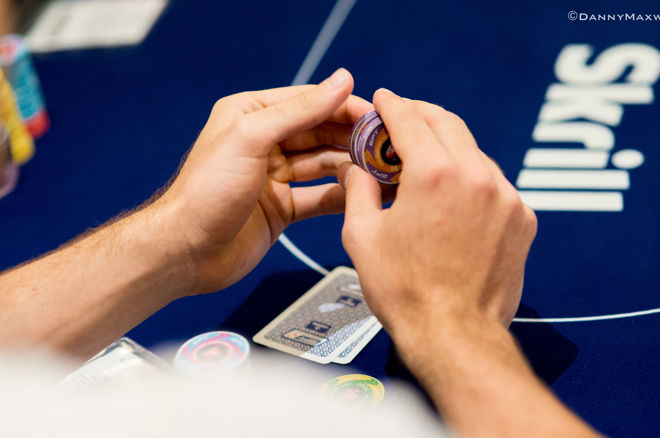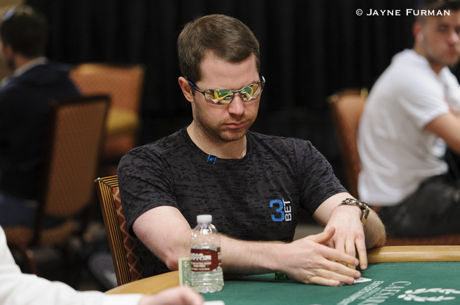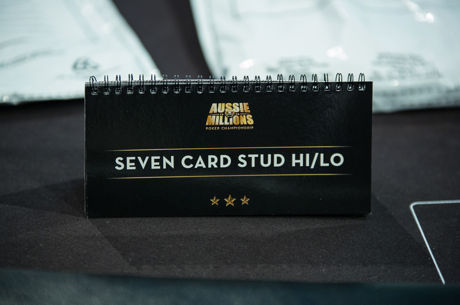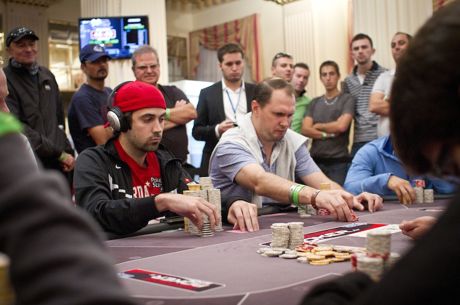How to Beat Tight Poker Players

When talking about how to play poker, you may have heard the saying ��tight is right,�� which is accurate to some degree. Players new to poker are often advised to play tight (that is, with a narrow, strong range of hands), while some more experienced players prefer to play a tight style that can be hard to beat if employed properly. Knowing how to beat tight poker players can be the difference between having a winning session and a losing one.
What is ��tight poker��?
Before you can learn how to beat tight poker players, you first need to learn what is meant by ��tight poker.�� As touched upon above, playing tight means that a player is, for the most part, being very careful when selecting starting hands. Although some tight players will mix up their play by raising or three-betting with a weaker hand such as suited connectors, they typically play pairs, strong aces and kings, and the more powerful suited connectors like queen-jack and jack-ten.
The main positive about this style is it is much easier to play than a loose one because working out where you stand in a hand after the flop is often a simpler task. If you��re only playing strong hands preflop, you are more likely going to be able to determine how likely you are to have the best hand on later streets.
For example, if you��ve raised with A?K? and the flop comes K?7?2?, then you are almost always going to have the best hand. Conversely, a loose player may see the same flop after raising with 9?7?, flop middle pair, then have a trickier time figuring out how to proceed in the hand.
The first step to learning how to play tight poker players is working out if they are aggressive or passive preflop, and also noting what style they tend to employ on later streets. Thankfully, this isn��t too difficult to do if you are observant. An aggressive player will rarely, if ever, limp preflop, and also often will be betting and raising after the flop. Meanwhile passive players only raise or bet when they believe they have a strong holding and will generally only call when they have caught a piece of the board.
Once you have pegged someone as tight-aggressive or tight-passive, you can set out to beat them.
How to beat tight poker players
It is said that you should play a style of poker that is the opposite to that of your opponents. If someone is playing a loose-aggressive style, then it is often correct to tighten up and play a stronger range of hands. With this in mind, if you are playing against a tight player, it could pay off to play a wider range of hands.
The strengths of tight poker players �� playing the more premium holdings preflop �� can also work against them after the flop. A flop such as 6?5?2? is less likely to have connected with a tight player��s opening range, which leaves the door wide open for you to steal the pot with a raise or check-raise.
Likewise, if you have pegged a player as being tight-aggressive, flopping a set on a board that includes a high card can be hugely profitable. Imagine a flop reading Q?9?3? and you��re holding 9?9? for middle set. Your opponent could have hands such as king-queen, queen-jack, ace-queen, kings, or aces here and is going to want to see the next community cards with this holding. Of course, the player may also have a set of queens, but this is unlikely and if they do, hey, that��s poker! Unless they have a pair of queens here, you��re likely to win a large pot.
A tight poker player employing a tight-passive strategy is very rarely a winning player because such a player often becomes very easy to read. Tight players generally only bet or raise when they have the goods, and will either check-call if they have some part of the board, or check-fold when they miss completely.
Despite this easy-to-read style, this is the tight poker player that many players struggle to beat. The key to success here is to listen to what they are telling you with their betting. If tight-passive players check-raise you on a king-high flop, they very likely have at least a king in their hand. If a tight-passive player is check-calling you on the flop and turn and all you have is queen-high, you better pray that you hit the river if you��re planning on betting again!
You can also use their passivity against them when you have a strong hand. There��s no fancy play involved, just simple aggression once your tight-passive opponent has shown a willingness to go all the way with a hand. Exercise extreme caution if they come out with a raise on the river, though, because river raises from this player type are rarely bluffs.
Do poker pros play tight?
If you happen to have read any poker book written before the poker boom, you��d be forgiven for thinking that every poker player played tight. Many pros made a good living playing a tight-aggressive style then because it was common for recreational players to play loosely and passively. Probably the most famous example of the tight poker pro is Dan Harrington who besides winning the 1995 World Series of Poker Main Event made three other WSOP Main Event final tables (in 1987, 2003, and 2004) and earned countless additional tournament scores, achieved in large part by playing tight poker.
The real answer to the question of whether or not poker pros play tight is ��sometimes.�� Although in the modern game playing styles are much looser, the best players know how to switch gears to keep their opponents guessing, often playing tightly for a couple of orbits of the table before instantly flipping a switch and turning loose-aggressive. Those at the top of the game know both when to play tight and when to be loose, using both styles to be successful.
Conclusion
Beating tight poker players can be difficult at times because they often have strong holdings preflop and that translates to strength on later streets. However, by carefully selecting your own hands and using such opponents�� tight nature against them, you��ll soon know how to beat tight poker players on a consistent basis.
Want to stay atop all the latest in the poker world? If so, make sure to get PokerNews updates on your social media outlets. Follow us on Twitter and find us on both Facebook and Google+!









